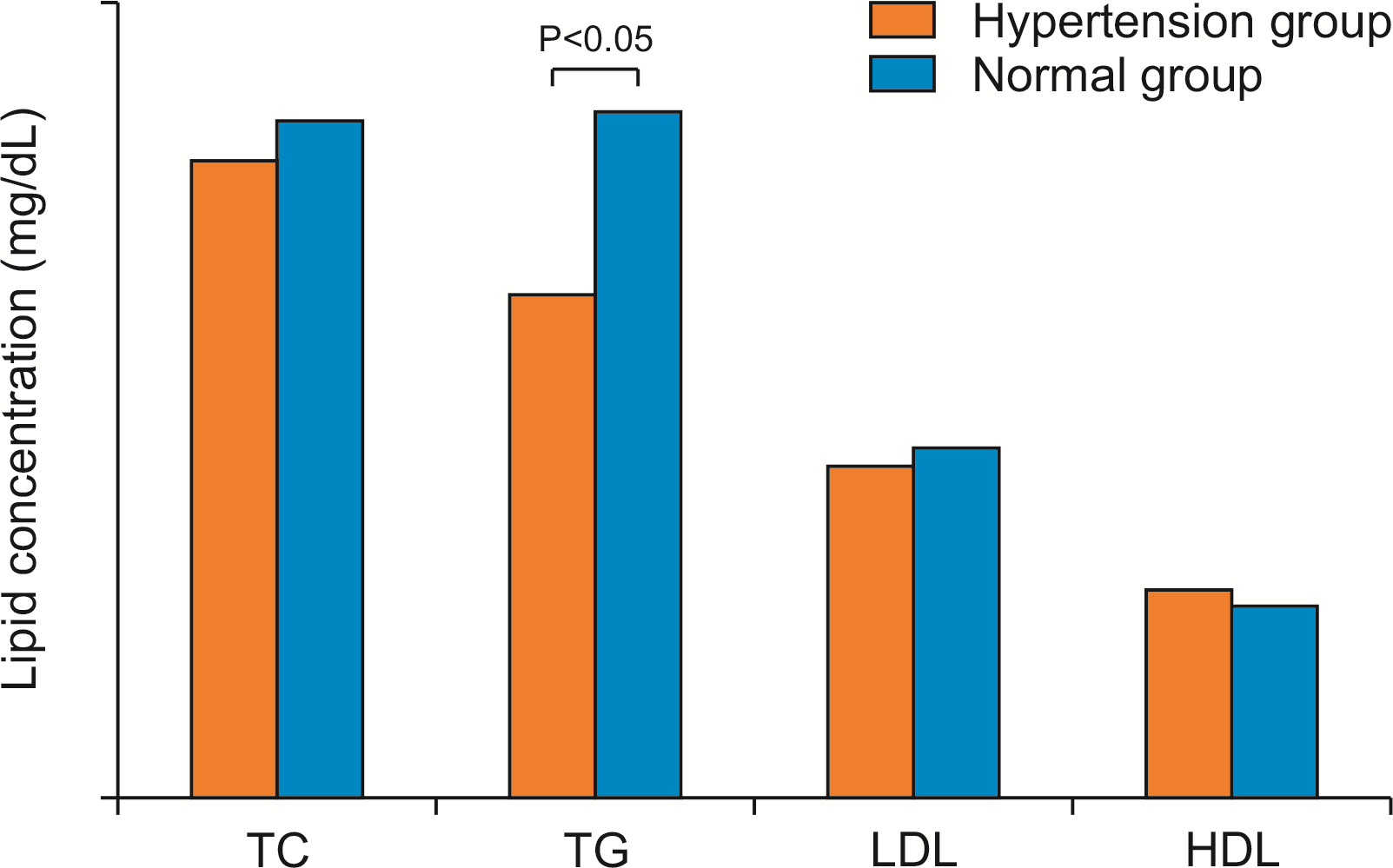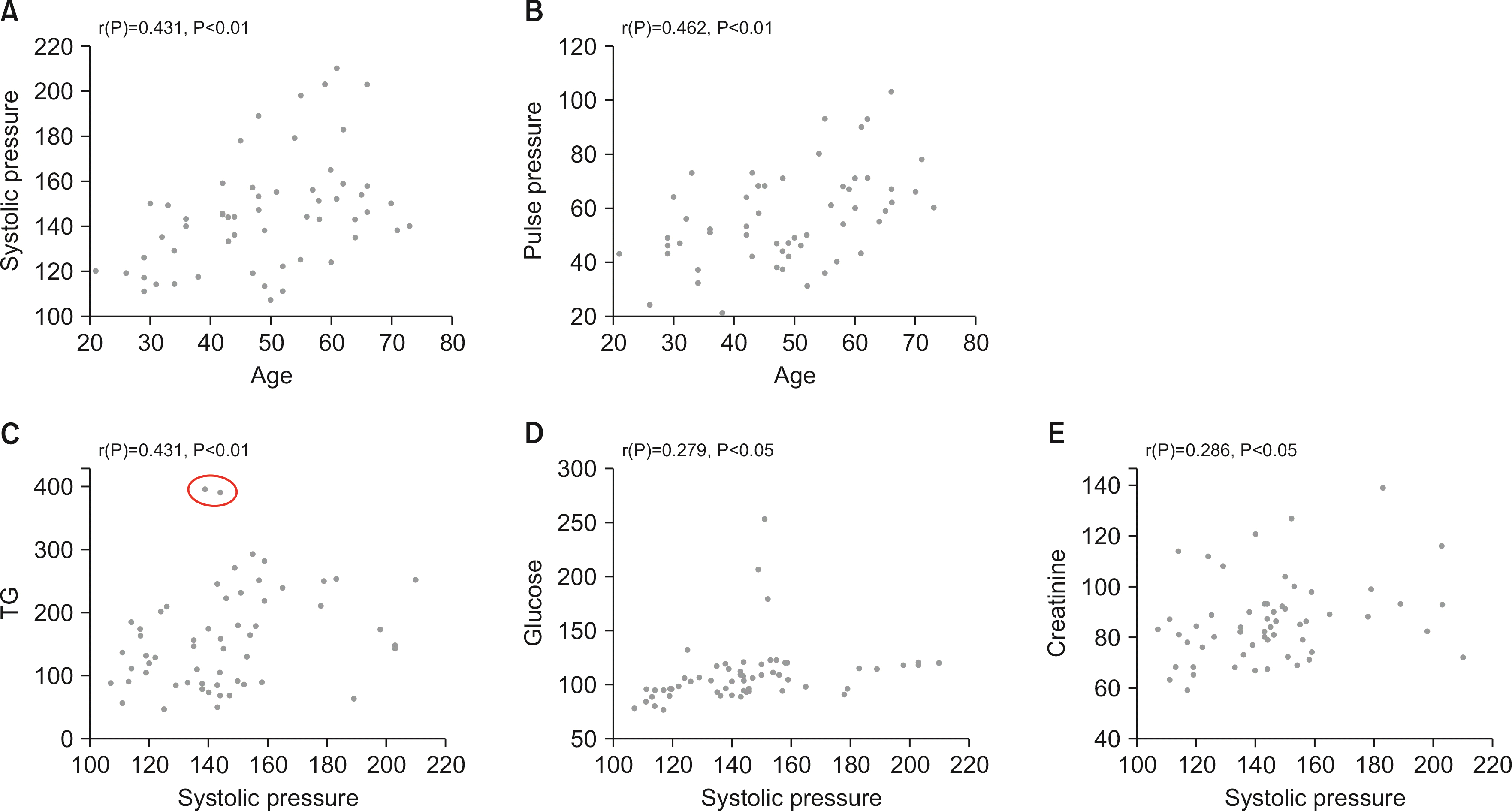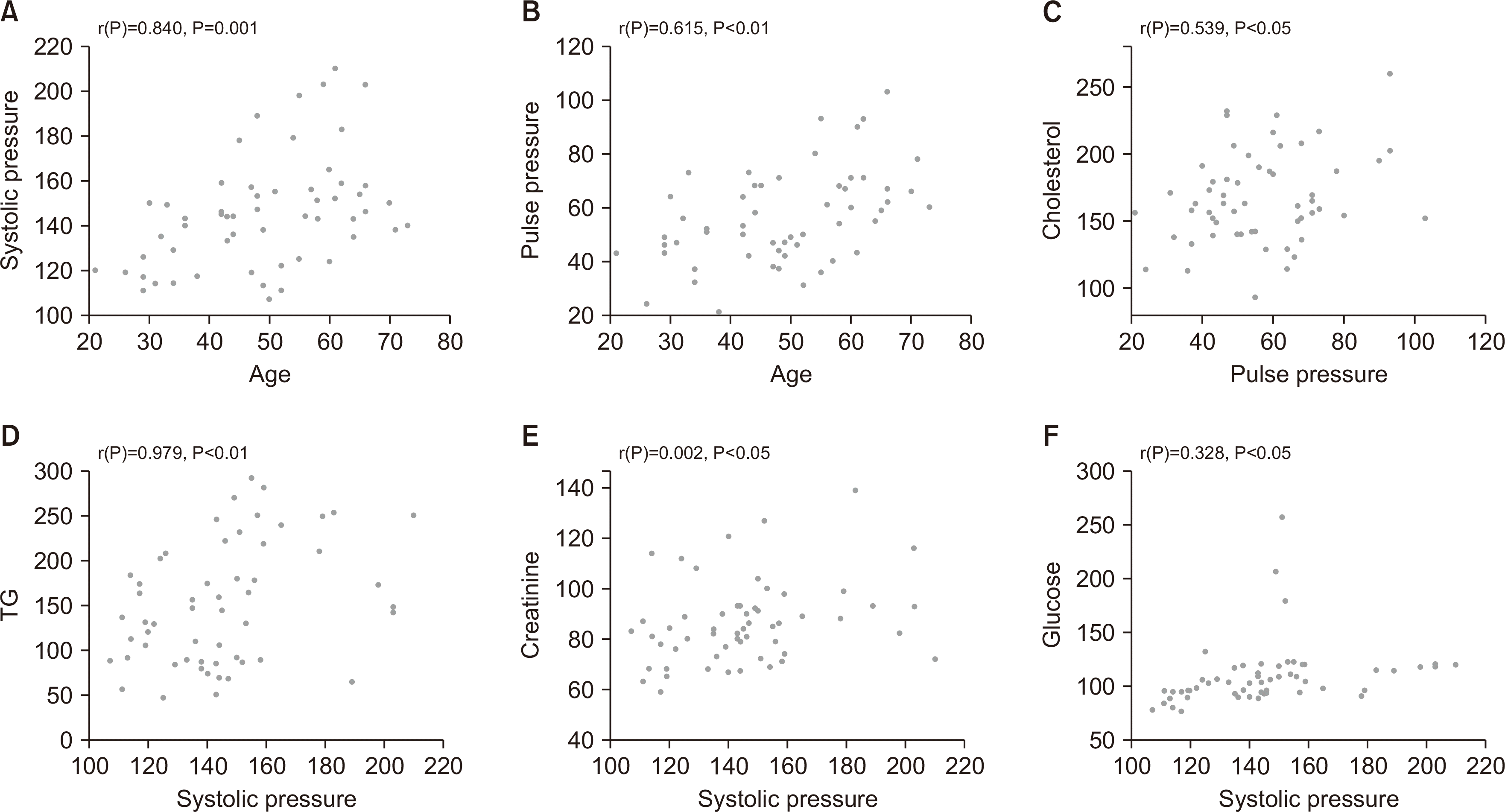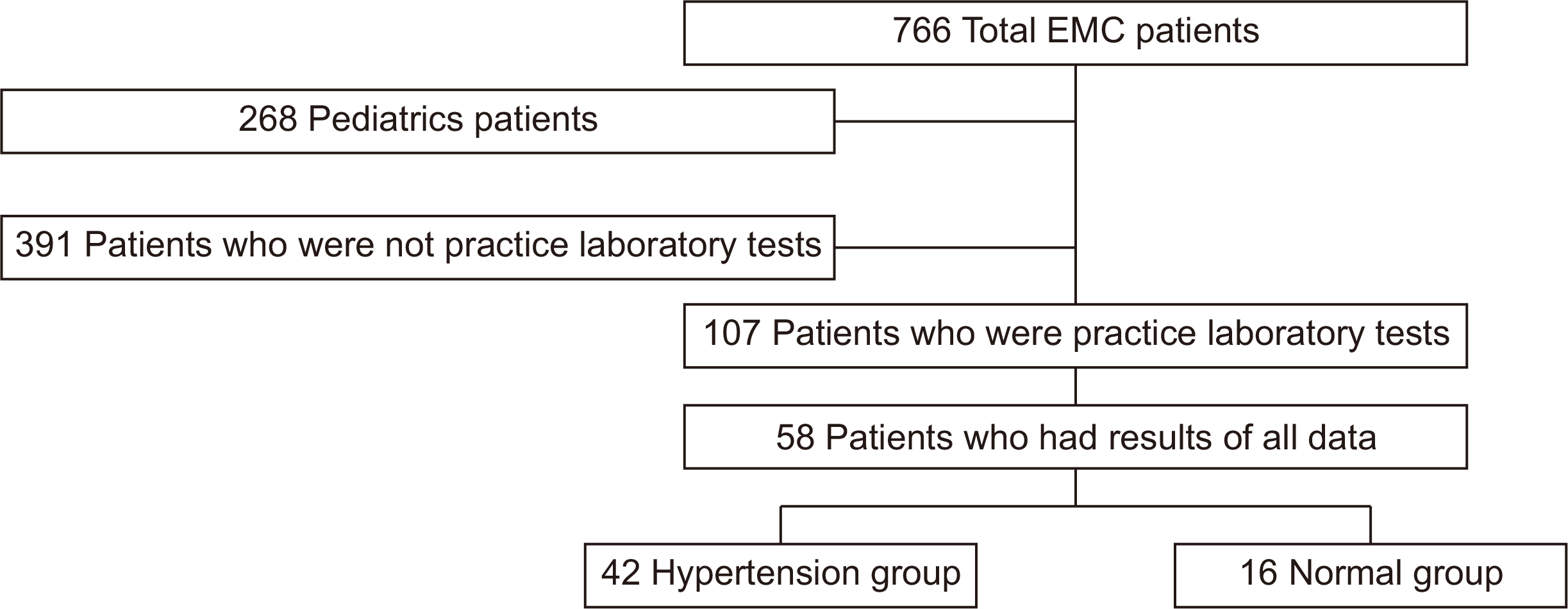1. World Health Organization. 2018. The top 10 causes of death. World Health Organization;Geneva:
2. World Health Organization. 2015. Uzbekistan: WHO statistical profile. World Health Organization;Geneva:
3. McKee PA, Castelli WP, McNamara PM, Kannel WB. 1971; The natural history of congestive heart failure: the Framingham study. N Engl J Med. 285:1441–1446. DOI:
10.1056/NEJM197112232852601. PMID:
5122894.

4. Gordon T, Castelli WP, Hjortland MC, Kannel WB, Dawber TR. 1977; High density lipoprotein as a protective factor against coronary heart disease: the Framingham Study. Am J Med. 62:707–714. DOI:
10.1016/0002-9343(77)90874-9. PMID:
193398.

5. Williams RR, Hunt SC, Hopkins PN, Stults BM, Wu LL, Hasstedt SJ, et al. 1988; Familial dyslipidemic hypertension. Evidence from 58 Utah families for a syndrome present in approximately 12% of patients with essential hypertension. JAMA. 259:3579–3586. DOI:
10.1001/jama.1988.03720240041032. PMID:
3373705.

8. Whelton PK, Carey RM, Aronow WS, Casey DE Jr, Collins KJ, Dennison Himmelfarb C, et al. 2018; 2017 ACC/AHA/AAPA/ABC/ACPM/AGS/APhA/ASH/ASPC/NMA/PCNA guideline for the prevention, detection, evaluation, and management of high blood pressure in adults: a report of the American College of Cardiology/American Heart Association Task Force on Clinical Practice Guidelines. Hypertension. 71:e13–e115. DOI:
10.1161/HYP.0000000000000065. PMCID:
PMC5945323. PMID:
29133356.

9. White KT, Moorthy MV, Akinkuolie AO, Demler O, Ridker PM, Cook NR, et al. 2015; Identifying an optimal cutpoint for the diagnosis of hypertriglyceridemia in the nonfasting state. Clin Chem. 61:1156–1163. DOI:
10.1373/clinchem.2015.241752. PMID:
26071491. PMCID:
PMC4554926.



10. Nordestgaard BG, Langsted A, Mora S, Kolovou G, Baum H, Bruckert E, et al. 2016; Fasting is not routinely required for determination of a lipid profile: clinical and laboratory implications including flagging at desirable concentration cut-points-a joint consensus statement from the European Atherosclerosis Society and European Federation of Clinical Chemistry and Laboratory Medicine. Eur Heart J. 37:1944–1958. DOI:
10.1093/eurheartj/ehw152. PMID:
27122601. PMCID:
PMC4929379.



11. American Diabetes Association. 2014; Diagnosis and classification of diabetes mellitus. Diabetes Care. 37(Suppl 1):S81–S90. DOI:
10.2337/dc14-S081. PMID:
24357215.
12. Mishra V, Arnold F, Semenov G, Hong R, Mukuria A. 2006; Epidemiology of obesity and hypertension and related risk factors in Uzbekistan. Eur J Clin Nutr. 60:1355–1366. DOI:
10.1038/sj.ejcn.1602465. PMID:
16788710.


13. Aringazina A, Kuandikov T, Arkhipov V. 2018; Burden of the cardiovascular diseases in Central Asia. Cent Asian J Glob Health. 7:321. DOI:
10.5195/CAJGH.2018.321. PMID:
30863664. PMCID:
PMC6393056.



14. Parikh NI, Pencina MJ, Wang TJ, Benjamin EJ, Lanier KJ, Levy D, et al. 2008; A risk score for predicting near-term incidence of hypertension: the Framingham Heart Study. Ann Intern Med. 148:102–110. DOI:
10.7326/0003-4819-148-2-200801150-00005. PMID:
18195335.


15. Benetos A, Waeber B, Izzo J, Mitchell G, Resnick L, Asmar R, et al. 2002; Influence of age, risk factors, and cardiovascular and renal disease on arterial stiffness: clinical applications. Am J Hypertens. 15:1101–1108. DOI:
10.1016/S0895-7061(02)03029-7. PMID:
12460708.


16. Benetos A, Safar M, Rudnichi A, Smulyan H, Richard JL, Ducimetieere P, et al. 1997; Pulse pressure: a predictor of long-term cardiovascular mortality in a French male population. Hypertension. 30:1410–1415. DOI:
10.1161/01.HYP.30.6.1410. PMID:
9403561.

17. Mitchell GF, Moye LA, Braunwald E, Rouleau JL, Bernstein V, Geltman EM, et al. 1997; Sphygmomanometrically determined pulse pressure is a powerful independent predictor of recurrent events after myocardial infarction in patients with impaired left ventricular function. SAVE investigators. Survival and Ventricular Enlargement. Circulation. 96:4254–4260. DOI:
10.1161/01.CIR.96.12.4254. PMID:
9416890.

18. Franklin SS, Khan SA, Wong ND, Larson MG, Levy D. 1999; Is pulse pressure useful in predicting risk for coronary heart Disease? The Framingham heart study. Circulation. 100:354–360. DOI:
10.1161/01.CIR.100.4.354. PMID:
10421594.

19. Benetos A, Zureik M, Morcet J, Thomas F, Bean K, Safar M, et al. 2000; A decrease in diastolic blood pressure combined with an increase in systolic blood pressure is associated with a higher cardiovascular mortality in men. J Am Coll Cardiol. 35:673–680. DOI:
10.1016/S0735-1097(99)00586-0. PMID:
10716470.


20. Laurent S, Boutouyrie P, Asmar R, Gautier I, Laloux B, Guize L, et al. 2001; Aortic stiffness is an independent predictor of all-cause and cardiovascular mortality in hypertensive patients. Hypertension. 37:1236–1241. DOI:
10.1161/01.HYP.37.5.1236. PMID:
11358934.


21. Perry HM Jr, Miller JP, Fornoff JR, Baty JD, Sambhi MP, Rutan G, et al. 1995; Early predictors of 15-year end-stage renal disease in hypertensive patients. Hypertension. 25(4 Pt 1):587–594. DOI:
10.1161/01.HYP.25.4.587. PMID:
7721402.


22. Klag MJ, Whelton PK, Randall BL, Neaton JD, Brancati FL, Ford CE, et al. 1996; Blood pressure and end-stage renal disease in men. N Engl J Med. 334:13–18. DOI:
10.1056/NEJM199601043340103. PMID:
7494564.

23. Emdin CA, Anderson SG, Woodward M, Rahimi K. 2015; Usual blood pressure and risk of new-onset diabetes: evidence from 4.1 million adults and a meta-analysis of prospective studies. J Am Coll Cardiol. 66:1552–1562. DOI:
10.1016/j.jacc.2015.07.059. PMID:
26429079. PMCID:
PMC4595710.


24. McCarty MF. 2003; Does postprandial storage of triglycerides in endothelial cells contribute to the endothelial dysfunction associated with insulin resistance and fatty diets? Med Hypotheses. 61:167–172. DOI:
10.1016/S0306-9877(02)00236-0. PMID:
12888297.


25. Lundman P, Eriksson M, Schenck-Gustafsson K, Karpe F, Tornvall P. 1997; Transient triglyceridemia decreases vascular reactivity in young, healthy men without risk factors for coronary heart disease. Circulation. 96:3266–3268. DOI:
10.1161/01.CIR.96.10.3266. PMID:
9396413.


26. Fadini GP, de Kreutzenberg S, Agostini C, Boscaro E, Tiengo A, Dimmeler S, et al. 2009; Low CD34+ cell count and metabolic syndrome synergistically increase the risk of adverse outcomes. Atherosclerosis. 207:213–219. DOI:
10.1016/j.atherosclerosis.2009.03.040. PMID:
19406403.


27. Hill JM, Zalos G, Halcox JP, Schenke WH, Waclawiw MA, Quyyumi AA, et al. 2003; Circulating endothelial progenitor cells, vascular function, and cardiovascular risk. N Engl J Med. 348:593–600. DOI:
10.1056/NEJMoa022287. PMID:
12584367.

28. Bhatt DL, Steg PG, Miller M, Brinton EA, Jacobson TA, Ketchum SB, et al. 2019; Cardiovascular risk reduction with icosapent ethyl for hypertriglyceridemia. N Engl J Med. 380:11–22. DOI:
10.1056/NEJMoa1812792. PMID:
30415628.

29. Meneton P, Jeunemaitre X, de Wardener HE, MacGregor GA. 2005; Links between dietary salt intake, renal salt handling, blood pressure, and cardiovascular diseases. Physiol Rev. 85:679–715. DOI:
10.1152/physrev.00056.2003. PMID:
15788708.









 PDF
PDF Citation
Citation Print
Print



 XML Download
XML Download